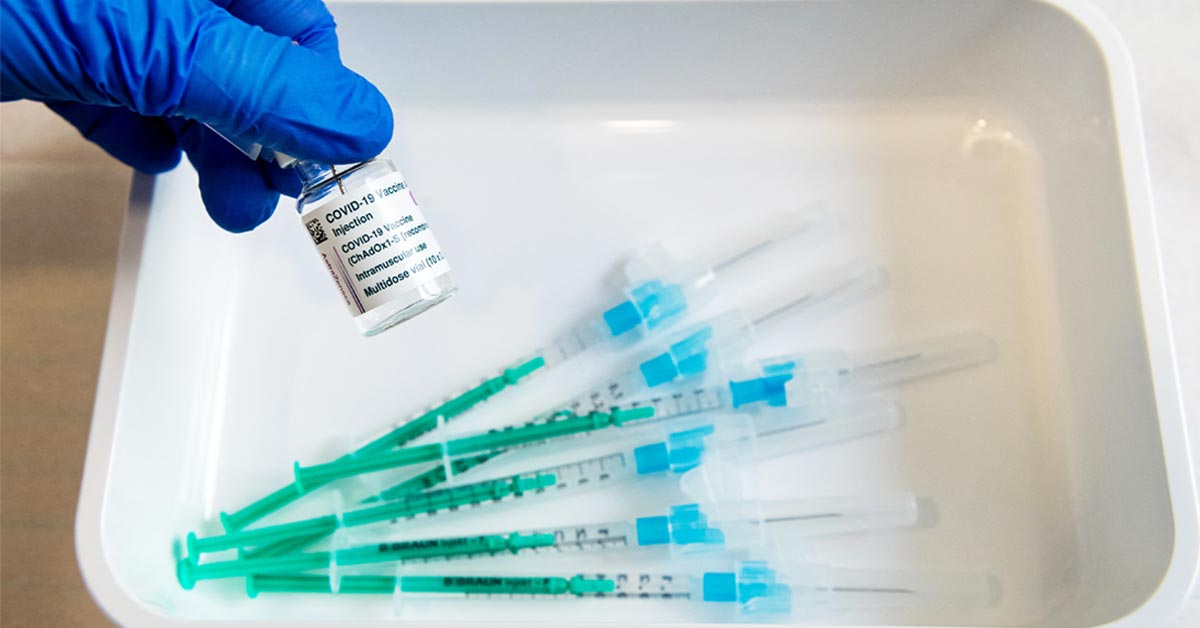Although mass vaccination campaigns are picking up speed in the West, the end of the COVID-19 pandemic is still not even in sight. For that, the United States (US) and other rich countries have only themselves to blame.
It has been clear at least since the early summer of 2020 that even with effective vaccines in hand, COVID-19 will not be stopped until populations everywhere have achieved herd immunity – when the share of people still susceptible to infection is so small that the disease can no longer spread.
It isn’t enough for any individual country to reach this point. As long as the virus is still circulating in other parts of the world, random mutations will continue to occur. Some will be disadvantageous to the virus, but some will render it even more contagious or deadly.
Again, we already know this. Just since December, three highly infectious strains of the SARS-CoV-2 virus have been identified. With a significantly higher transmission rate (and potentially a greater fatality rate), the British variant, B.1.1.7, is already spreading rapidly within the US and Europe. The South African variant, B.1.351, may be even more contagious. And the Brazilian strain, P.1, may be the most dangerous of all.
The emergence of new variants means that even when the United Kingdom (UK) reaches herd immunity (as seems likely at the current vaccination rate), Britons still will not be out of the woods. Unless the UK seals itself off completely from the rest of the world (which is essentially impossible), those who travel outside the country will bring back new variants, and some of these could be capable of bypassing the protections afforded by the current vaccines.
P.1 is especially worrying. It emerged in Manaus, which by last October recorded an infection rate of almost 80 percent, above the 60-70 percent threshold that scientists estimate to be sufficient for herd immunity against COVID-19. But because more infections allow for more mutations, being above the herd-immunity threshold may not be enough.
Indeed, the emergence of P.1, which pummelled the city with another wave of infections, implies that immunity against the initial virus did not provide immunity against the new variant.
True, scientists should be able to reprogram vaccines to be effective against the new variants once they have been identified; that is one of the advantages of the mRNA technology underpinning the Moderna and Pfizer-BioNTech vaccines. But this flexibility is small consolation after a variant enters a country and forces economic and social life back into a state of lockdown.
Once this happens, the entire population must queue up again for booster shots. This whack-a-mole scenario can be avoided if the rest of the world gets vaccinated quickly, halting the virus’s spread and thus its opportunities to acquire new mutations. But worldwide vaccination seems impossible at the moment, because not enough doses are being made available in the developing world.
Had we managed to provide the two billion doses sought by the World Health Organization’s (WHO) COVAX program, it would still have been exceedingly difficult to achieve widespread vaccination in remote parts of Africa, Asia, and the Middle East, owing to a lack of basic health infrastructure and transport networks.
With Johnson & Johnson’s new one-shot vaccine, which doesn’t need the cold-supply-chain logistics required by the mRNA vaccines, there should be a fighting chance. Tragically, though, vaccine nationalism is still standing in the way. With the rollout of Chinese and Russian vaccines, we may be able to produce enough vaccines to supply the entire world. What we lack, however, is international cooperation.
Coordinating the global delivery of vaccines is crucial for ending the pandemic. For example, it stands to reason that the most effective vaccines should be administered in areas where the virus is spreading the fastest. An additional complication is that there is currently limited reliable data on the Chinese vaccines.
We may need to allow for the possibility that they are less effective than others and that the virus could have a better chance of continuing to spread and mutate in populations that have received these vaccines.
Despite the precariousness of the situation, Western governments and business lobbies are busy coming up with bad ideas instead of attempting to provide more vaccines to the developing world. The worst of these, now under consideration in both the US and the European Union (EU), is a proposed “vaccine passport” that would allow those who have been vaccinated to travel internationally.
Now, there is good argument for granting vaccinated people credentials to access crowded indoor spaces, thus encouraging vaccine uptake. But with its singular focus on opening up global travel, a vaccine passport is a terrible idea for a world in which the virus is still spreading and mutating as a result of our failure to vaccinate everyone.
Vaccine passports do not provide protection against new variants such as P.1. All it would take is one rich businessperson or tourist with a vaccine passport and a new variant to trigger an epidemic in a country that thought it had achieved herd immunity.
These problems will multiply until we start treating the pandemic as the global crisis that it is. In a world without international cooperation, a country that succeeds in vaccinating most of its population has only one defense: to abandon the most basic tenets of globalisation.
At a minimum, all international travellers should be required to quarantine for two weeks in carefully monitored sites, regardless of whether they are nationals or foreigners, and regardless of whether they have been vaccinated against the known variants.
Even this basic measure would represent a huge step back from globalisation. But if Western countries continue to focus solely on vaccinating their own populations while ignoring the need for global coordination, they should prepare for a future without unencumbered international travel.
Related Articles:

